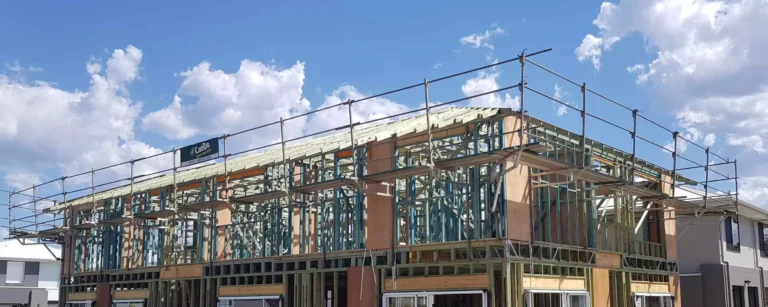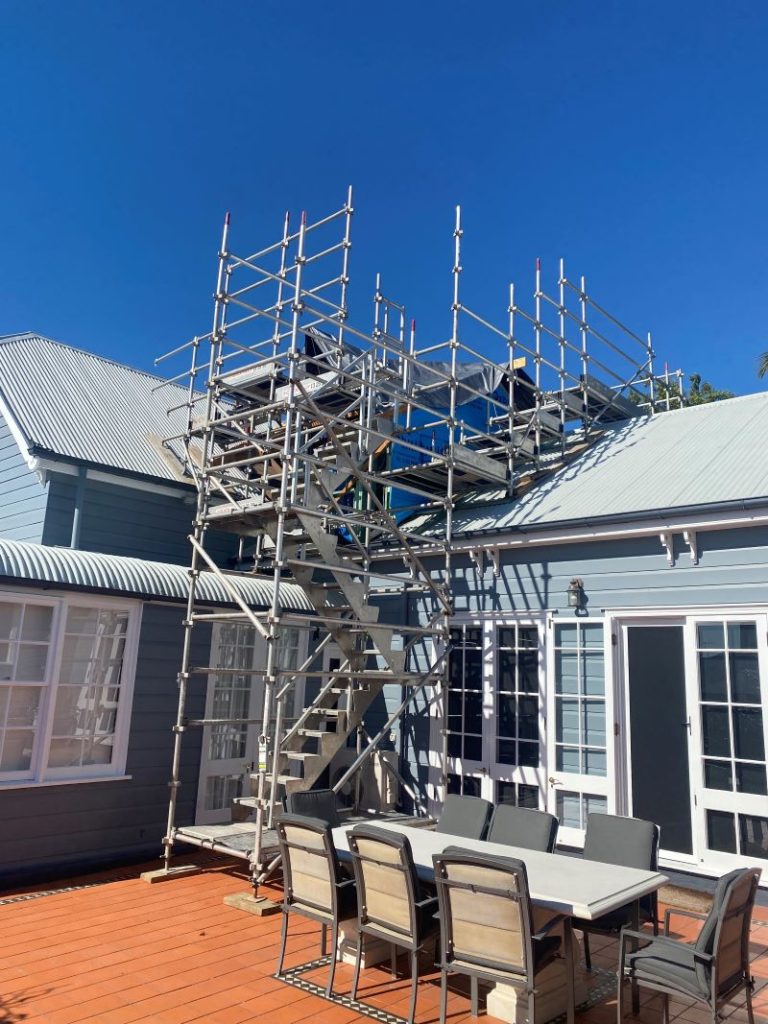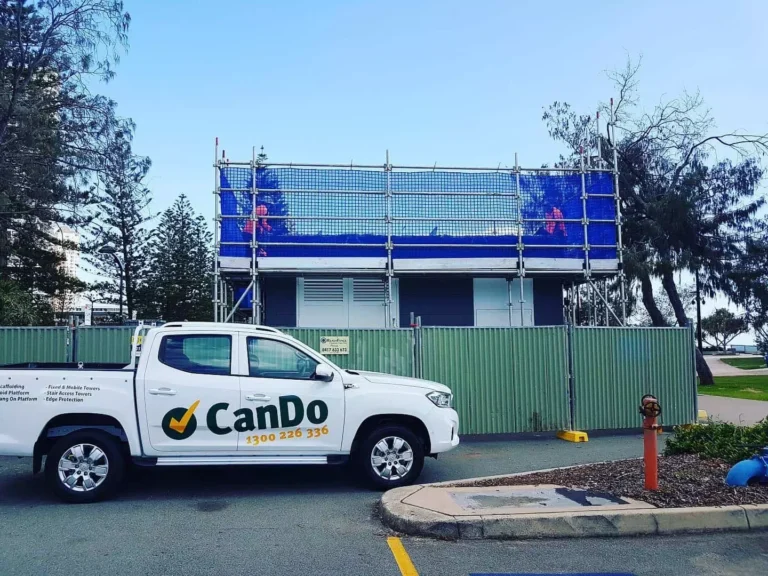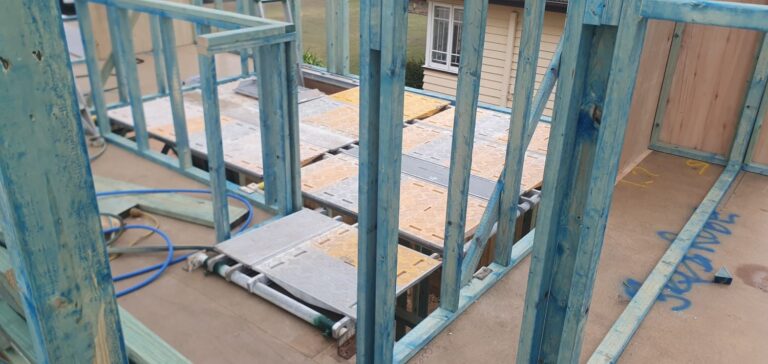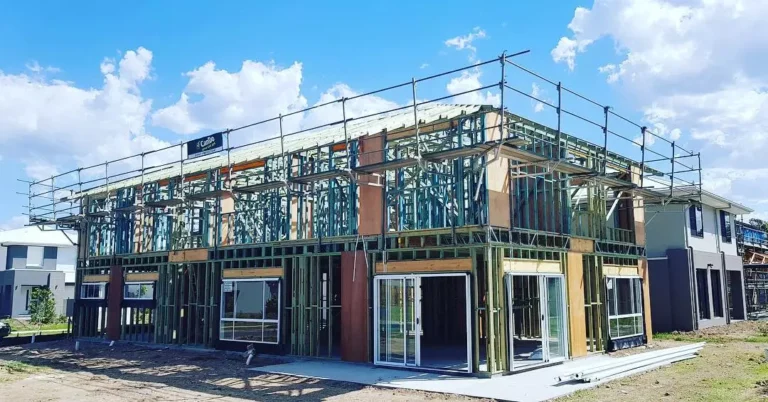When Is Scaffolding Required?
Scaffolding is one of the most important safety measures you should implement when working at heights, primarily within the building and construction industry.
Though state regulations can vary widely when it comes to scaffolding safety requirements, the risks to health and safety of employees and the public should always be front of mind.
Risk Assessment
The primary means to determine whether or not a scaffold component is needed for safe access in your construction project is through a thorough risk assessment of the project.
This assessment is best conducted by a competent person with a scaffolding licence who will conduct an initial inspection of the site. Generally, the results of this assessment will determine the safety risks, whether you do need scaffolding, and the type of scaffold platform. Sometimes a basic scaffold or temporary structure is all you need, while in other cases a more advanced scaffolding system is required, such as for heavy loads, significant heights, unstable ground or portable applications.
Regular inspections should also be conducted during various stages of the construction project to ensure safe access is maintained with safety risks minimised.
To give you a better understanding of scaffolding equipment usage, here is a guide on what activities require a scaffold platform to be installed and the types of scaffolds best suited for the respective activity.
1. Working at a height
When a task requires workers to perform at a certain height, then scaffolding is strictly needed to abide by health and safety standards as set out by Safe Work Australia. Furthermore, if a person or object can fall more than 4 metres from the scaffold platform or structure, it is a requirement that a qualified person holding a high risk work licence should undertake the scaffolding work.
Scaffolding can readily provide a stable platform where workers feel safe and secure while on the job. To perform advanced scaffolding duties, you will need a competent person to assess, design and install the scaffold structure.
When you need to access heights across a large surface, mobile scaffolding can provide an excellent option to keep costs down.
2. Long job duration
Single-day constructions don’t always require the use of scaffolding considering the time it takes for assembly and dismantling of the scaffolds. However, in the case of larger construction jobs that would take more than a couple of days to complete, roof constructions for instance, are best carried out with a secure scaffolding system. Aside from providing a secure platform, it can also help protect the unfinished work and equipment especially during harsh weather.
3. Extensive jobs
On extensive projects that need multiple workers to work at the same time, scaffolding is the best way to allow them to move around the site safely and conveniently. Installing scaffolding also provides safe transportation to minimise the risk of dropping construction materials as they are passed from a height to the ground that might endanger site visitors or passers-by.
Hang on scaffolding or hung scaffold is a good option when installing the fascia, gutter or roofing of a property as it allows the ground around the building to be clear for other trades, and is typically accompanied with an external ladder and step heights.
The maximum load of the scaffold is also a major factor when determining the type of scaffold component required, with various factors such as the ground level stability, dead loads, live loads and the appropriate use of base plates.
Prefabricated scaffold is a common component in any construction project and depending on the heights, maximum working loads and implementation, can be installed by a competent person who holds a basic scaffolding licence, an intermediate scaffolding licence or a high risk work licence. A qualified person will be able to guide you on the right scaffolding equipment required based on the safe working loads and the risk to health and safety, ensuring safe access for workers.
What activities require scaffolding?
Construction sites, demolition, and substantial repairs of a property are all activities that require scaffolding.
No matter the size of the property or whether it is classified as residential or commercial, scaffolding is a must when carrying out the following specific tasks:
Home improvements
When a property owner decides to conduct renovations, conversions, or extensions, erecting scaffolds is mandated.
The use of various types of scaffolding will provide the construction workers not only with easy access to high places, but also work platforms that guarantee comfort and worry-free working conditions, thus helping them to perform their work more efficiently.
Painting and decorating
Painting and decorating a property may require working at a substantial height which increases the risk of falls on the job.
Scaffolding is important to painters and decorators so they can work safely. Aside from yielding a stable work platform, scaffolds also provide a safe place for their tools and equipment.
Roof and gutter repairs
When substantial repairs are being carried out in the gutters or on the roof of a house or a building, the risk of work-related injuries caused by falls is always high.
This is often due to unstable working surfaces such as loose tiles or weak roof structures that might fall. Guttering work in particular can require movement around the building so hang on platforms can be the ideal choice for your scaffolding requirements.
In order to minimise these risks to health, it is imperative to install a scaffolding platform that can provide a stable surface for a safer work area.
Window Cleaning
Cleaning the windows of tall buildings and skyscrapers like hotels, towering office buildings and other commercial buildings require scaffolding.
With windows located as high as 1300 feet or more, window cleaners always face the threat of a fatal fall.
Scaffolding enables them to work with ease, and ensure their safety while comfortably cleaning windows of 20 to 50 storey buildings.
Building inspections
Building inspections are conducted to check the structural integrity of a building and guarantee the safety of its residents. The inspection involves checking various areas of the infrastructure that can be located as high as a few hundred metres from the ground. Thus, building inspections do require standard scaffolding as safety equipment in conducting the inspection procedure.
Scaffolding Hire at CanDo
If you’re working on jobs or engaging in activities that require scaffolding, make sure to hire trustworthy scaffolding services to ensure your safety as well as the safety of the people you are working with.
If you require scaffolding hire and height protection services on the Gold Coast, the Northern Rivers, or the greater Brisbane area, get in touch with CanDo.
We have a comprehensive range of scaffolding hire solutions and height safety services, whether you’re a private property owner, or working with residential and commercial building industries.
Contact CanDo on 1300 226 336 or send an online enquiry for all your scaffolding requirements.


